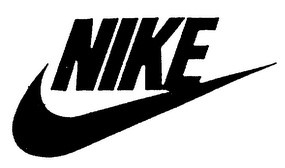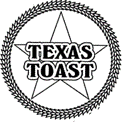Create Time 2017-05-25 04:05 Views:19773
Overview
Witmart can register three types of trademark for you: word mark, figurative mark, and figurative mark with letters. While word marks and figurative marks solely contain textual or graphical elements, respectively, figurative marks with letters combine elements from both types. If you have a logo that contains both textual and graphical elements, you can choose to separately register a word mark for the text and a figurative mark for the graphics, or register them together as a figurative mark with letters. This article will examine these types of trademark, as well as the pros and cons of registering words and graphics separately and together.
Word marks
They consist solely of a combination of words, letters, and numbers. Upon registration, the word mark will protect the word in any design, style, and color, and protection extends to business names as well. This means that if your company decides to change the font of your logo, the new logo will still be protected.
Figurative marks
They are represented using pictures, graphics, or images. In the US and some other jurisdictions, stylized word marks are also categorized as figurative marks. Like how a word mark consists of a precise combination of words, letters, and numbers, a figurative mark protects a unique arrangement of graphics and/or words.
When in use, for example, in the form of a logo, the graphics must be arranged in the exact same way as it appears when it was filed. Thus, if the logo design is changed, the new logo would not be protected.
Registering words and logo separately
Pros
You gain the broadest protection possible. By registering both the words and logo as separate trademarks, you gain another layer of protection that would not exist if you had registered all the elements together as one mark. As all forms of the textual elements on your logo are protected, no competitors will be able to cause confusion by using a similar name, or the same name stylized in a different way. For example, Nike registered a trademark for the standard characters “NIKE”, in addition to filing a separate application for the “swoosh” design, seen below together as one logo.

You have the freedom to modify parts of your logo. Since you have filed separate trademark applications, this gives you a variety of advantages in using your logo. You can change the stylization of the text on your logo in any way you like, including using a different color or font. If you had registered only one trademark for the entire logo, you would not be able to modify any aspects of it without affecting protection. In addition, you can choose to use the words and graphics separately, or in a different arrangement. For example, if Nike ever chooses to remodel their logo by moving the words “NIKE” beneath the “swoosh” design, the new logo will still be protected.
If one application is rejected, you can still use parts of your trademark. If you choose to file separate applications, the outcomes of the applications for the word mark and the logo mark do not affect each other. The logo mark can be accepted even if the word mark was rejected, and vice versa.
Cons
It costs more to file multiple trademark applications. In the US, a trademark application (TEAS Plus) costs $225 per class. Filing separate applications for the words and graphics means that the cost is doubled, even if the words or graphics correspond to the same class of goods or services.
The word mark or logo mark may be rejected if it lacks distinctiveness. As you cannot have a descriptive name or generic design for your mark, you may find it difficult to register the words and graphics separately. This will be further discussed in the next section.
Registering words and logo together
Pros
They add distinctiveness to an otherwise generic or descriptive word mark. You may encounter problems if you choose to file separate applications for the words and graphics. Some word marks may be rejected if the words are too similar to an existing mark, or if the mark is too descriptive. However, it is possible to obtain protection if the words are combined with graphics, as the graphics add a layer of distinctiveness to the trademark. For example, “Texas Toast” as a word mark would have been rejected, because the term is descriptive. However, it was accepted as a figurative mark with letters after a graphical design was added to the text (as seen below) – the new mark was deemed graphically distinct from other marks. This is further discussed next.

They are more robust against challenges. That is, figurative marks with letters are primarily recognized for their non-text elements. In the case of suspected infringement, the graphics between the two marks would be inspected for similarities. Therefore, even if the text elements between two marks are similar, both marks could exist at the same time if their graphics are sufficiently different. Therefore, others may find themselves unsuccessful if they attempt to sue you for infringement.
Cons
Your trademark may be at risk of dilution. Although you are less likely to be sued for infringement, you may find it hard to prevent others from using similar elements that exist in your mark. Because only graphics, not text, are inspected to determine infringement, another mark could exist under a similar name but with different graphics from yours. This could undoubtedly cause confusion among customers, and lessen the uniqueness of your mark.
You lose the freedom to modify parts of your mark. As discussed above, figurative marks with letters protect a unique combination of graphics and words. If you change any aspect of your logo, it is no longer protected, forcing you to file another application. This could cost your company more money later.
If the figurative mark with letters is rejected, you are unable to protect any parts of your trademark. The outcome for combined mark applications depends on both the word and logo portions. In jurisdictions with a low success rate of the logo trademark, such as China, this low success rate applies to the combined mark as well. If the logo portion is not accepted, the whole mark would consequently be rejected. In these situations, the applicant would not receive protection for the word portion of the combined mark, even if it was capable of being accepted on its own.
Choosing which type of mark you should apply for is an important but often complicated decision. If, after reading this article, you find yourself unable to come to a decision, you should consult with one of Witmart’s trademark consultants. We will guide you through the entire process of trademark registration.